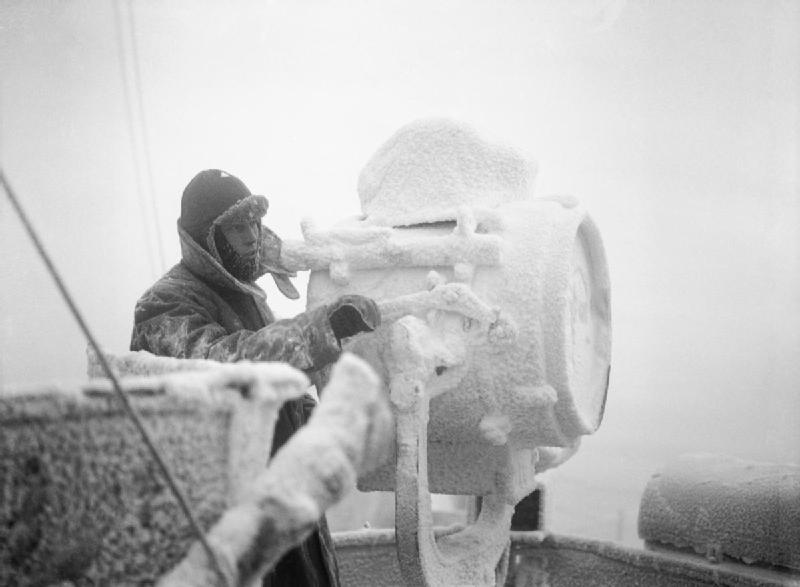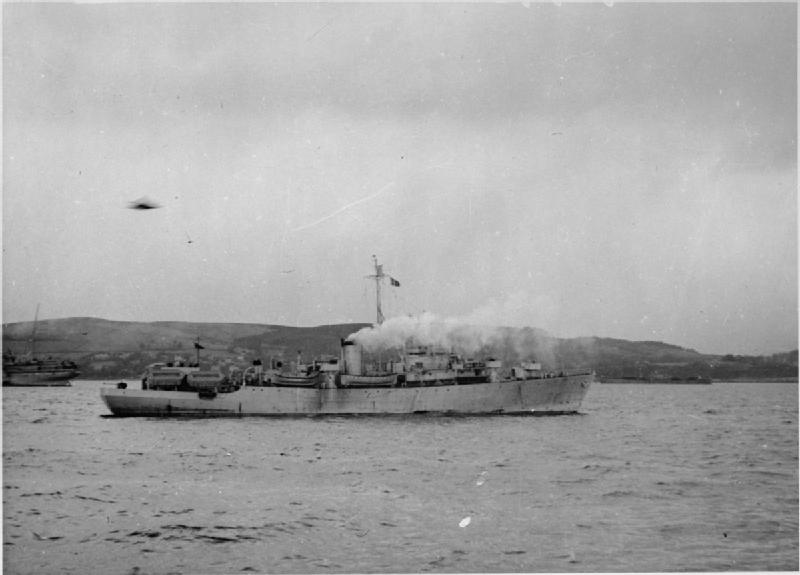|
Convoy PQ 6
Convoy PQ 6 was the seventh of the Arctic convoys of World War II by which the Western Allies supplied material aid to the Soviet Union in its fight with Nazi Germany. The convoy sailed from Hvalfjörður, Iceland, on 8 December 1941 and arrived at Murmansk Murmansk () is a port city and the administrative center of Murmansk Oblast in the far Far North (Russia), northwest part of Russia. It is the world's largest city north of the Arctic Circle and sits on both slopes and banks of a modest fjord, Ko ... on 20 December 1941. Ships The convoy consisted of eight merchant ships (1 Soviet, 4 British, 1 Norwegian and 2 Panamanian). The escort included the cruiser , destroyers and , two minesweepers and two armed trawlers. The ships arrived safely. Order of battle Convoyed ships Escorts Footnotes Bibliography * Further reading * * * * * * * * * * External links Convoy web {{DEFAULTSORT:Convoy PQ 6 PQ 6 C Naval battles of World War II involving the Sovie ... [...More Info...] [...Related Items...] OR: [Wikipedia] [Google] [Baidu] |
Arctic Convoys Of World War II
The Arctic convoys of World War II were oceangoing convoys which sailed from the United Kingdom, Iceland, and North America to northern ports in the Soviet Union – primarily Arkhangelsk (Archangel) and Murmansk in Russia. There were 78 convoys between August 1941 and May 1945, sailing via several seas of the Atlantic Ocean, Atlantic and Arctic Ocean, Arctic oceans, with periods with no sailings during several months in 1942, and in the summers of 1943 and 1944. About 1,400 merchant ships delivered essential supplies to the Soviet Union under the Anglo-Soviet Agreement and US Lend-Lease program, escorted by ships of the Royal Navy, Royal Canadian Navy, and the U.S. Navy. Eighty-five merchant vessels and 16 Royal Navy warships (two cruisers, six destroyers, eight other escort ships) were lost. Nazi Germany's ''Kriegsmarine'' lost a number of vessels including German battleship Scharnhorst, one battleship, three destroyers, 30 U-boats, and many aircraft. The convoys demonstrated ... [...More Info...] [...Related Items...] OR: [Wikipedia] [Google] [Baidu] |
Soviet Union
The Union of Soviet Socialist Republics. (USSR), commonly known as the Soviet Union, was a List of former transcontinental countries#Since 1700, transcontinental country that spanned much of Eurasia from 1922 until Dissolution of the Soviet Union, it dissolved in 1991. During its existence, it was the list of countries and dependencies by area, largest country by area, extending across Time in Russia, eleven time zones and sharing Geography of the Soviet Union#Borders and neighbors, borders with twelve countries, and the List of countries and dependencies by population, third-most populous country. An overall successor to the Russian Empire, it was nominally organized as a federal union of Republics of the Soviet Union, national republics, the largest and most populous of which was the Russian SFSR. In practice, Government of the Soviet Union, its government and Economy of the Soviet Union, economy were Soviet-type economic planning, highly centralized. As a one-party state go ... [...More Info...] [...Related Items...] OR: [Wikipedia] [Google] [Baidu] |
Nazi Germany
Nazi Germany, officially known as the German Reich and later the Greater German Reich, was the German Reich, German state between 1933 and 1945, when Adolf Hitler and the Nazi Party controlled the country, transforming it into a Totalitarianism, totalitarian dictatorship. The Third Reich, meaning "Third Realm" or "Third Empire", referred to the Nazi claim that Nazi Germany was the successor to the earlier Holy Roman Empire (800–1806) and German Empire (1871–1918). The Third Reich, which the Nazis referred to as the Thousand-Year Reich, ended in May 1945, after 12 years, when the Allies of World War II, Allies defeated Germany and entered the capital, Berlin, End of World War II in Europe, ending World War II in Europe. After Hitler was appointed Chancellor of Germany in 1933, the Nazi Party began to eliminate political opposition and consolidate power. A 1934 German referendum confirmed Hitler as sole ''Führer'' (leader). Power was centralised in Hitler's person, an ... [...More Info...] [...Related Items...] OR: [Wikipedia] [Google] [Baidu] |
Hvalfjörður
Hvalfjörður (, "whale fjord") is situated in the west of Iceland between Mosfellsbær and Akranes. The fjord is approximately long and wide. The origin of the name Hvalfjörður is uncertain. Certainly today there is no presence of whales in the fjord; while there is a whaling station in the fjord, whaling is conducted in the open ocean outside the fjord; likewise, it is modern and postdates the naming of the fjord. One theory as to the naming of the fjord is that early settlers encountered a pod of whales trapped in the fjord who ended up beached; the stranding of whales was in early Iceland a godsend in the meat that it provided, to the point that the word ''hvalreki'' means both "whale beaching" and "windfall or godsend". However, there is no direct evidence to support this theory. Another theory is that the fjord is named after Hvalfjall ("Whale Mountain", a mountain at the bottom of the fjord), which would have been in turn named after its visual appearance. A common fol ... [...More Info...] [...Related Items...] OR: [Wikipedia] [Google] [Baidu] |
Murmansk
Murmansk () is a port city and the administrative center of Murmansk Oblast in the far Far North (Russia), northwest part of Russia. It is the world's largest city north of the Arctic Circle and sits on both slopes and banks of a modest fjord, Kola Bay, an estuarine inlet of the Barents Sea, with its bulk on the east bank of the inlet. The city is a major port of the Arctic Ocean and is about from the Norway–Russia border, border with Norway, from the Finland–Russia border, border with Finland and from Moscow. Benefiting from the North Atlantic Current, Murmansk resembles cities of its size across western Russia, with highway and railway access to the rest of Europe, and the northernmost trolleybus system on Earth. Its connectivity contrasts with the isolation of Arctic ports like the Siberian Dikson (urban-type settlement), Dikson on the shores of the Kara Sea, and Iqaluit, in the Canadian Arctic. Despite long, snowy winters, Murmansk's climate is moderated by the generall ... [...More Info...] [...Related Items...] OR: [Wikipedia] [Google] [Baidu] |
Convoy Rescue Ship
During the Second World War, designated convoy rescue ships accompanied some Battle of the Atlantic (1940), Atlantic convoys to rescue survivors from ships that had been attacked. Rescue ships were typically small freighters with passenger accommodation converted to rescue service. This involved enlarging Galley (kitchen), galley and food storage areas and providing berthing and sanitary facilities for approximately 150 men. Preparation for service included the installation of scrambling nets along the sides, and the substitution of boats suitable for open sea work for normal lifeboats. Rescue ships normally included a small operating room for an embarked naval doctor and sick bay staff.Hague 2000 p.90 Service The first specially equipped rescue ship went into service in January 1941. When rescue ships were unavailable, large, ocean-going tugboats or converted trawlers were sometimes designated to perform rescue duty. By the end of the war 30 rescue ships had been built or conv ... [...More Info...] [...Related Items...] OR: [Wikipedia] [Google] [Baidu] |
E And F-class Destroyer
The E and F-class destroyers were a group of 18 destroyers built for the Royal Navy during the 1930s. The ships were initially assigned to the Home Fleet, although they reinforced the Mediterranean Fleet during the Second Italo-Abyssinian War, Italian invasion of Abyssinia of 1935–36 and enforced the Non-intervention in the Spanish Civil War, Non-Intervention Agreement during the Spanish Civil War of 1936–1939. After the beginning of the Second World War in August 1939, the E-class ships were mostly assigned to escort duties under the Western Approaches Command, while the Fs were assigned to escort the ships of the Home Fleet. Between them they sank four German submarines through March 1940 while losing only one ship to a submarine. Most of the sister ship, sisters were committed to the Norwegian Campaign in April–June where they helped to sink one German destroyer and a submarine. The two E-class minelayer-destroyers helped to evacuation of Dunkirk, evacuate Allied troop ... [...More Info...] [...Related Items...] OR: [Wikipedia] [Google] [Baidu] |
List Of Requisitioned Trawlers Of The Royal Navy (WWII)
This is a list of civilian trawlers requisitioned by the Royal Navy for use in World War II. HMT stands for "His Majesty's Trawler". Requisitioned trawlers, whalers and drifters; A B C D E F G H I J K L M N O P Q R S T U V W X Y Z References {{reflist External links Naval Trawlers Naval trawlers of the United Kingdom, World War II, requisitioned Lists of World War II ships, Trawlers, requisitioned Lists of Royal Navy ships, Trawlers, World War II, requisitioned United Kingdom in World War II-related lists, Trawlers, requisitioned Trawlers ... [...More Info...] [...Related Items...] OR: [Wikipedia] [Google] [Baidu] |
Naval Battles Of World War II Involving The United Kingdom
A navy, naval force, military maritime fleet, war navy, or maritime force is the branch of a nation's armed forces principally designated for naval and amphibious warfare; namely, lake-borne, riverine, littoral, or ocean-borne combat operations and related functions. It includes anything conducted by surface ships, amphibious ships, submarines, and seaborne aviation, as well as ancillary support, communications, training, and other fields. The strategic offensive role of a navy is projection of force into areas beyond a country's shores (for example, to protect sea-lanes, deter or confront piracy, ferry troops, or attack other navies, ports, or shore installations). The strategic defensive purpose of a navy is to frustrate seaborne projection-of-force by enemies. The strategic task of a navy also may incorporate nuclear deterrence by use of submarine-launched ballistic missiles. Naval operations can be broadly divided between riverine and littoral applications (brown-water na ... [...More Info...] [...Related Items...] OR: [Wikipedia] [Google] [Baidu] |





